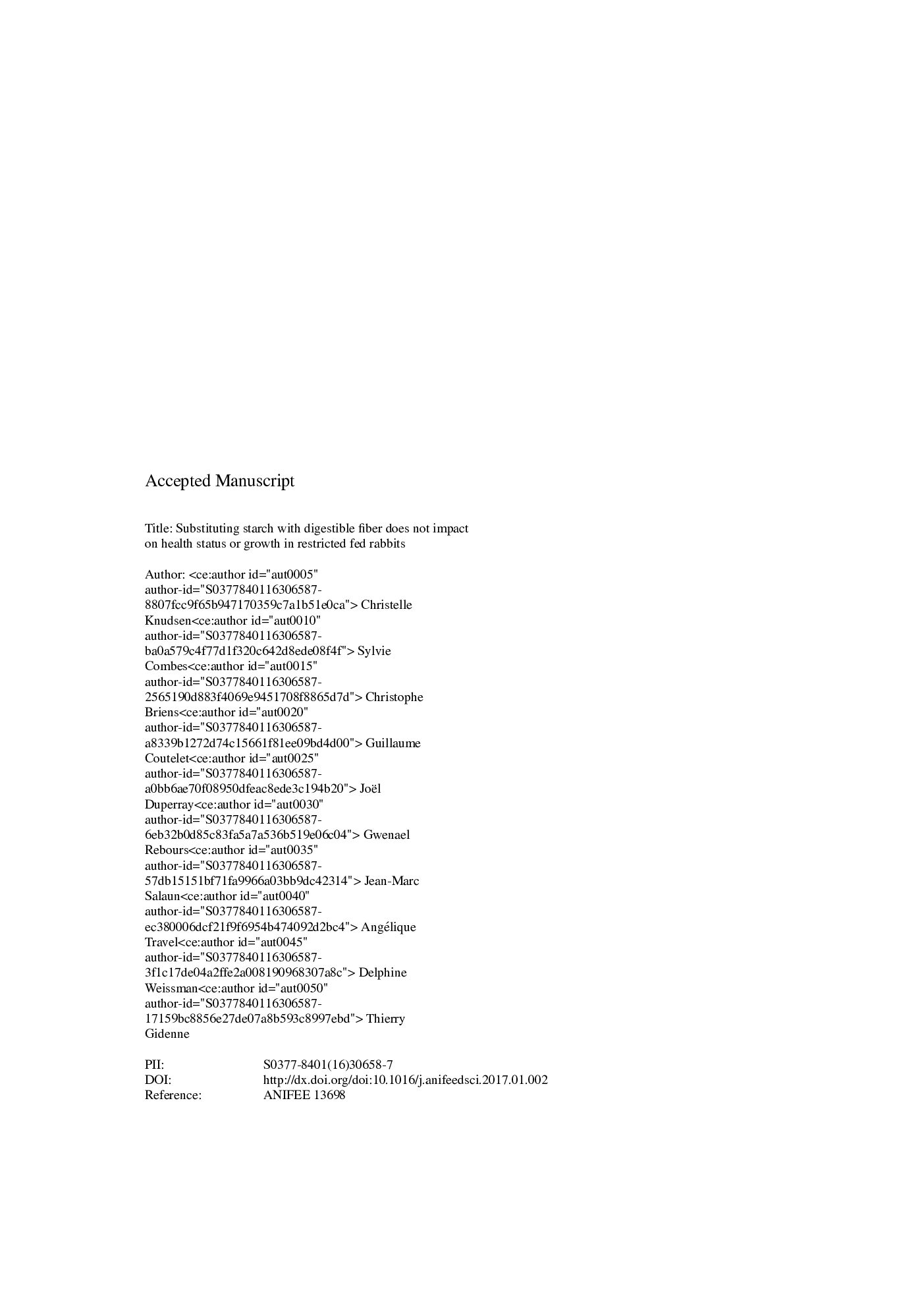| Article ID | Journal | Published Year | Pages | File Type |
|---|---|---|---|---|
| 5538898 | Animal Feed Science and Technology | 2017 | 33 Pages |
Abstract
Post-weaning feed restriction strategies have proved to reduce mortality and morbidity in rabbits, but result in decreased growth and lower slaughter yield that can be partially compensated for with the use of a high energy diet. To further optimize the feeding strategies we have studied the possibility of substituting starch with digestible fibers in high energy diets fed restricted. In four experimental sites, rabbits were divided into four equal groups (n = 418/group) differing in digestible fiber to starch ratio (ST = 1.21 vs DF = 2.29), and feeding level (ad libitum or restricted at 75%) according to a 2 Ã 2 experimental design. Animals were fed the experimental diets from weaning (35 days of age) to slaughter (70-74 days of age), and feed restriction was applied from 35 to 63 days of age. Digestive efficiency was assessed during feed restriction in 48 animals and carcass and meat quality measurements were performed (n = 380). Restricted feeding reduced the growth by 9% on the whole fattening period (P < 0.001), and the slaughter yield by 0.7% (P < 0.001) but improved the feed conversion ratio by 9% (P < 0.001). Feed intake was slightly reduced with the DF diet, whereas growth and feed conversion were unaffected by the diet. However, slaughter yield was impaired with the DF diet (â0.5%, P < 0.01), as a result of a heavier digestive tract (+1.1%, P < 0.001), thus indicating an overestimation of the growth with that diet. Feed restriction improved the fecal digestibility of energy (+0.02, P < 0.01) and protein (+0.03, P < 0.001), thus partly explaining the improved feed conversion, while the digestibility of fibers was improved with the DF diet (+0.04 for ADF, +0.05 for NDF, P < 0.01). In poor health conditions, on the overall experimental period, a 25% reduction in feed intake lowered the mortality rate (9.3% vs 14.7%, P < 0.01) and tended to reduce morbidity only with the use of the ST diet. Our results confirm the positive effects of feed restriction upon health and feed efficiency. Dietary energy level does not seem to impact on the sanitary parameters with a digestible fiber to starch ratio above 1.2 under a restriction strategy.
Keywords
Related Topics
Life Sciences
Agricultural and Biological Sciences
Animal Science and Zoology
Authors
Christelle Knudsen, Sylvie Combes, Christophe Briens, Guillaume Coutelet, Joël Duperray, Gwenael Rebours, Jean-Marc Salaun, Angélique Travel, Delphine Weissman, Thierry Gidenne,
